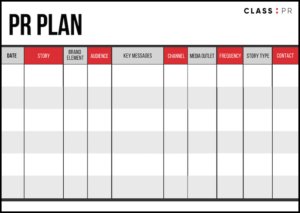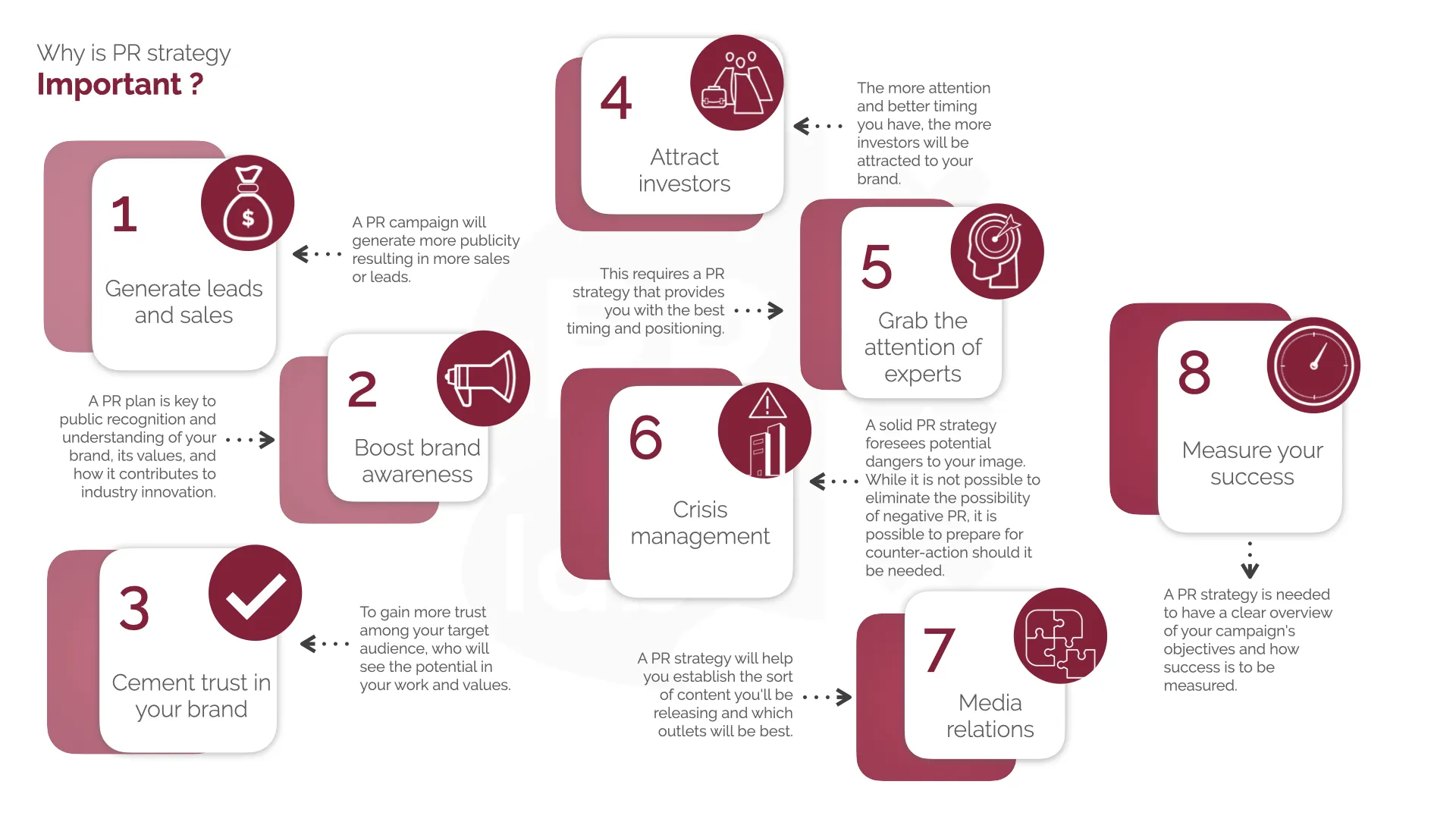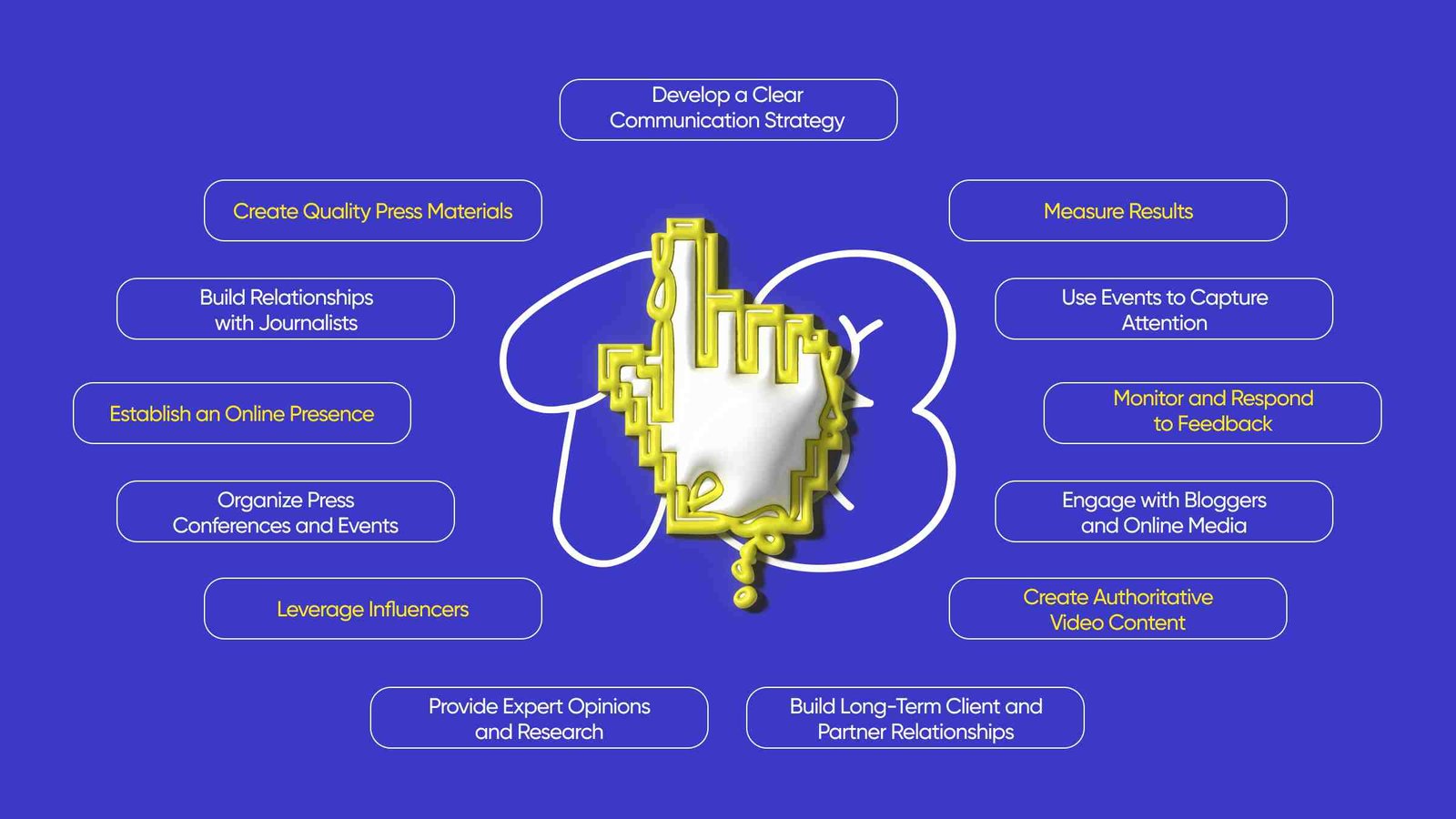A well-crafted public relations (PR) plan is essential for any organization looking to build and maintain a positive public image. By developing a strategic PR plan, you can effectively communicate your brand’s message, engage with your target audience, and achieve your business goals. Here’s a step-by-step guide to creating a PR plan, from strategy to execution.

Step 1: Define Your Objectives
The first step in creating a PR plan is to clearly define your objectives. What do you want to achieve with your PR efforts? Your goals might include:
- Building brand awareness: Increasing the visibility of your brand among your target audience.
- Enhancing reputation: Improving public perception and trust in your brand.
- Promoting products or services: Generating interest and driving sales for specific offerings.
- Managing a crisis: Protecting your brand’s reputation during challenging situations.
Clearly defined objectives provide a roadmap for your PR efforts and help measure the success of your campaigns.
Step 2: Identify Your Target Audience
Understanding your target audience is crucial for crafting effective PR messages. Identify who you want to reach with your PR efforts. Consider factors such as demographics, interests, behaviors, and media consumption habits. Knowing your audience allows you to tailor your messaging and choose the right channels to reach them.
Step 3: Develop Key Messages
Key messages are the core points you want to communicate to your audience. These messages should align with your brand’s values, resonate with your target audience, and support your PR objectives. Your key messages should be:
- Clear: Easily understood and free of jargon.
- Concise: Straightforward and to the point.
- Consistent: Aligned across all communication channels and materials.
Develop a set of key messages that can be adapted for various PR activities, including press releases, social media posts, interviews, and more.
Step 4: Choose the Right PR Tactics
With your objectives, audience, and key messages defined, you can now choose the PR tactics that will best help you achieve your goals. Some common PR tactics include:
- Press Releases: Announcing news, events, or product launches to the media.
- Media Outreach: Building relationships with journalists, bloggers, and influencers to secure coverage.
- Social Media: Engaging with your audience on platforms like Twitter, Facebook, Instagram, and LinkedIn.
- Content Creation: Developing blog posts, articles, videos, and infographics to share your brand’s story.
- Events: Hosting or participating in events, such as conferences, webinars, or product launches.
- Crisis Communication: Preparing statements and action plans for potential PR crises.
Select tactics that align with your objectives and resonate with your target audience.
Step 5: Create a PR Calendar
A PR calendar helps you organize and schedule your PR activities over a specific period, such as a quarter or a year. This calendar should include key dates, such as product launches, events, and holidays, as well as deadlines for press releases, content creation, and media outreach.
By planning your PR activities in advance, you can ensure a consistent flow of communication and maximize your impact.
Step 6: Execute Your PR Plan
With your strategy, tactics, and calendar in place, it’s time to execute your PR plan. Start by assigning tasks to your team, ensuring that everyone understands their roles and responsibilities. Monitor the progress of each activity and make adjustments as needed to stay on track.
During the execution phase, it’s essential to maintain flexibility. Be prepared to adapt your plan in response to unexpected opportunities or challenges.
Step 7: Monitor and Measure Results
To assess the effectiveness of your PR plan, you need to monitor and measure your results. Track key performance indicators (KPIs) that align with your objectives, such as:
- Media Coverage: The quantity and quality of media mentions.
- Social Media Engagement: Likes, shares, comments, and follower growth.
- Website Traffic: Increases in visitors, page views, and time spent on your site.
- Lead Generation: The number of leads or inquiries generated by your PR efforts.
- Public Perception: Changes in brand sentiment or customer satisfaction.
Analyzing these metrics will help you understand what’s working, what’s not, and where you can improve.
Step 8: Evaluate and Refine Your PR Plan
After your PR campaign concludes, take the time to evaluate the results. Compare your outcomes with your initial objectives and identify areas for improvement. Use these insights to refine your PR strategy for future campaigns, ensuring continuous growth and success.
A PR plan is a dynamic tool that should evolve based on your experiences and changing market conditions. By regularly reviewing and adjusting your plan, you can stay ahead of the curve and continue to build a strong, positive reputation for your brand.




